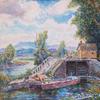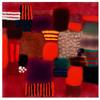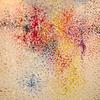Demimonde: The Floating World and Toulouse-Lautrec
- NEW YORK, New York
- /
- January 26, 2016
Ronin Gallery will present Demimonde: The Floating World and Toulouse-Lautrec, a stunning juxtaposition of Toulouse-Lautrec’s posters and lithographs and the Japanese woodblock prints that inspired him. From masterworks of ukiyo-e, by artists such as Harunobu, Utamaro, and Sharaku, to Toulouse-Lautrec’s Divan Japonais and the complete Le Café Concert, the exhibition invites you to explore the parallel demimondes of fin-de-siècle Paris and Edo-period Japan. This exhibition is available for viewing March 10 – April 30, Monday – Friday 11 a.m. – 6 p.m., and Saturday 11 a.m. – 4 p.m.
Arriving in Europe as early as the 1830s, ukiyo-e or “pictures of the floating world” reverberated throughout the hearts of Western artists, reaching the height of fashion by the 1870s. The compositional daring, sharp diagonals, bold, flat blocks of color, and love for the quotidian captured the imagination of the French Impressionists and Post-Impressionists alike. Henri de Toulouse-Lautrec was smitten. The influence of the Japanese prints that he so avidly collected, is apparent throughout his oeuvre, but particularly resonates through his prints. Like the ukiyo-e artists in Japan, Toulouse-Lautrec intended his lithographs to be enjoyed by a wide audience, visible from the street in the windows of cabarets and café concerts of Montmartre.
Through this larger lens of the demimonde, this exhibition considers the elements of Japonisme in Toulouse-Lautrec’s work. A comparison of Sharaku’s kabuki portrait Iwai Hanshiro IV as Shigenoi (1794) and Lautrec’s bust lithograph of Jeanne Granier (1898) reveals Lautrec’s affinity for a dramatic profile, and admiration for the deeply expressive, highly individualized faces of Sharaku’s actors. Utamaro’s Courtesan Hitomoto (1805) demonstrates the truncation of form, union of text and image, and contrast of complex lines and flat areas of color found in Lautrec’s vision of Jane Avril in Divan Japonais (1893).
Though separated by an ocean and nearly a century, fin-de-siècle Paris and Edo’s floating world share in the celebration of worldly pleasure. From the elegant courtesans of Edo’s Yoshiwara to the myriad pleasures of Paris’ Moulin Rouge, the ukiyo-e artists and Toulouse-Lautrec embraced the world of actors, courtesans, and other spectral figures of their respective pleasure cultures. Both invite their visitor a fleeting escape into a beautiful, if shadowed, realm.
Opening Reception: Thursday, March 10, 5:30 p.m. – 8 p.m.
About Ronin Gallery
The Ronin Gallery is a leading family-owned Japanese and East Asian art gallery in New York City and home to the largest private collection of 17th-21st century Japanese prints for sale in the United States. Founded in 1975 in the Explorers Club Mansion of New York City, the gallery is now located on Madison Avenue and 49th Street. For more information, visit:











100x100_c.jpg)

